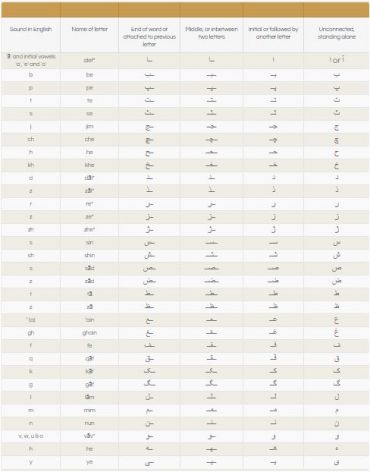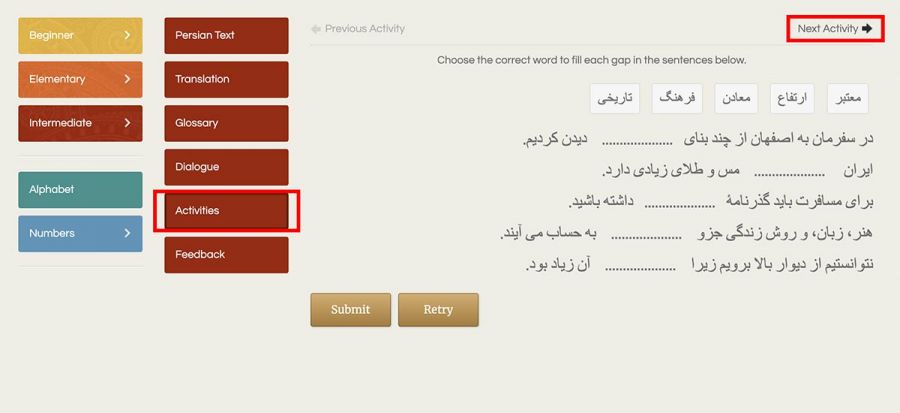
Project 6060 – Lesson 56
-
EN
Lesson 56
Masnavi
***
Translation
The book, ‘Masnavi’, widely known as ‘Masnavi-ye Ma’navi’ is written by ‘Mowlavi’; one of Iran’s greatest poets, Sufis and mystics of the thirteenth century AD. This book is composed of 26,000 rhyming couplets and is counted as one of the best post-Islamic books of Persian mystical literature. Mowlavi, or ‘Mowlana’, who they know as ‘Rumi’ in the West, composed this book in the form of masnavi poetry and this is the reason for the title of the book. Although other poets had used the masnavi form of poetry before Mowlavi, the literary level of Mowlavi’s Masnavi is higher than them. In this book, 424 stories appear about humanity, its place in the world, and its difficulties in coming to God.
In this book, Mowlana has gathered a collection of thoughts from Islamic culture and uses the stories as tools for expressing Sufism and mystical teachings. The main characters in these stories are prophets, kings, shepherds, and even animals. Some of these stories usually appear in more ancient sources, but Mowlavi re-tells them as poetry and in masnavi form.
Moving on, you are going to read a summary of the story ‘The Lion and the Rabbit’, which initially appeared in the Kalileh and Demneh (Panchatantra) and was used years later by Mowlana.
A handful of wild animals lived in a beautiful meadow. Their only problem was that there was a lion, who considered himself to be king of the jungle and plains and was always hunting them. One day, the animals consulted one another and decided to talk with the lion. They came up to the lion and said to him: “We would like to select one from amongst ourselves each day and bring them to you as a meal and then there will be no need for you to come out of your grove and prey on us; in this way life on the plain will not be difficult and unpleasant for us.
The lion said: “I accept on this condition that you be loyal to me and keep your promise and don’t think about tricking me.”
The animals said: “Oh, King of the Jungle, you don’t need to worry yourself, otherwise this doubt will make you even more confused. You should rely on God and be satisfied with what you are given.
The lion said: “In your opinion, it is important to trust in God, but I believe that because God has given me hands and feet and claws and teeth, I need to struggle to capture food. Even the prophet has emphasised this issue.
Once again, the animals insisted that nothing is more important than reliance, but the lion brought up many reasons why struggle and effort increases God’s gifts.
In short, after long conversations, the fox, deer, rabbit and jackal saw that they couldn’t change the lion’s mind and satisfy him with words. Therefore, they made a pact with the lion that they would be loyal to their promise and send the lion’s food up to him.
So the animals gathered and decided that each day they would do a draw and whoever’s name was drawn, they would be the lion’s food, and they all accepted.
Each day, after the draw, one of the animals would go up to the lion and he would eat his food without any effort, until one day it came to the rabbit’s turn to go up to the lion.
The rabbit was very unhappy and thought he could find a solution. The other animals said to the rabbit: “We made a pact with the lion and you should go like all the others.”
The rabbit said: “Give me a chance to think and I will save myself and you from this Lion.”
The animals said to the rabbit: “Oh you idiot, what are you saying? Even animals that are bigger and better than you haven’t been able to trick the lion. How can a little thing like you do this?”
The rabbit said: “God has inspired me to be able to carry out this task with cunning and wit.”
The animals asked the rabbit: “What is your plan”?
The rabbit answered: “Not all secrets can be told. I have to see what happens.”
The rabbit lingered a little and then went towards the lion. The lion was extremely angry that his food was late and when he saw the rabbit, he said angrily: “Why are you late and why don’t you obey me?”
The rabbit said: “Wait so I can explain. I and my friend, who is fatter than me, were coming up to you so that you could eat my friend. On the way here, another lion attacked us. I said to him, ‘We are the King of the Jungle’s food and you mustn’t attack us.’ But that lion said, ‘Which king? I will kill both you and your king.’ I asked him to give us a chance to give you the news. That fierce lion accepted and said, ‘On one condition: You must leave the fat rabbit with me and you go to the lion yourself.’”
The lion said: “Tell me where that lion is.”
The rabbit guided the lion and accompanied him towards a well. When they got close to the well, the rabbit stopped!
The lion said: “Why have you stopped? Come up here!”
The rabbit said: “That fierce lion lives in this well and I’m scared of him.”
The lion said: “Don’t be scared! For I am stronger than him! Why don’t you come to my side and see whether that lion is at the bottom of the well or not?!”
The rabbit went up to beside the lion and the lion and rabbit both looked into the well. Just as the lion and rabbit were looking into the well, the lion saw his reflection with a rabbit by its side in the water!
The lion thought that this really was the other lion and rabbit in that well. He let the rabbit go free and, out of intense rage, leapt into the well to kill his enemy and get the fat rabbit. In this way, the lion fell into the well and died and animals of the jungle were free of his tyranny.
-
FR
Leçon 56
Masnavi
***
Traduction
Coming soon
-
ES
Lección 56
Masnavi
***
Traducción
Coming soon
-
FA
درس پنجاه و ششم
مثنوی معنوی
***
متن فارسی
کتاب “مثنوی”، مشهور به “مثنوی معنوی” نوشتۀ “مولوی” یکی از بزرگترین شاعران، صوفیان و عارفان ایران در قرن سیزدهم میلادی است. این کتاب از ۲۶٬۰۰۰ بیت تشکیل شده است و یکی از برترین کتابهای ادبیات عرفانی فارسی پس از اسلام به حساب می آید. مولوی یا “مولانا” که در غرب او را به نام “رومی” می شناسند، این کتاب را در قالب شعری مثنوی سرود و عنوان کتاب هم به همین علّت است. اگر چه قبل از مولوی، شاعران دیگری از قالب شعری مثنوی استفاده کرده بودند ولی سطح ادبی مثنوی مولوی بالاتر از آنهاست. در این کتاب ۴۲۴ داستان در مورد انسان، جایگاه او در دنیا، و دشواری های رسیدن او به خدا آمده است.
مولانا در این کتاب مجموعه ای از اندیشه های فرهنگ اسلامی را گرد آوردهاست و از داستان به عنوان ابزاری برای بیان تعلیمات تصوّف و عرفان استفاده میکند. شخصیّتهای اصلی این داستانها پیامبران، پادشاهان، چوپانان و حتّی حیوانات هستند. برخی از این داستان ها معمولاً در منابع قدیمی تر آمدهاند امّا مولوی آنها را مجدداً به صورت شعر و در قالب مثنوی بازگو می کند.
در ادامه خلاصه ای از داستان “شیر و خرگوش” را می خوانید که ابتدا در “کلیله و دمنه” آمده و سال ها بعد مولانا از آن استفاده کرده است.
دسته ای از حیوانات وحشی در چراگاهی زیبا زندگی می کردند. تنها مشکل آنها شیری بود که خود را سلطان دشت و جنگل می دانست و همیشه در حال شکار آنها بود. روزی حیوان ها با هم مشورت کردند و تصمیم گرفتند با شیر صحبت کنند. آنها نزد شیر رفتند و به او گفتند: ما می خواهیم هر روز از بین خود یکی را انتخاب كنیم و به عنوان غذا برای تو بیاوریم و دیگر لازم نیست تو از بیشه ات بیرون بیایی و در کمین ما باشی، در این صورت زندگی در دشت برای ما سخت و ناگوار نمی شود.
شیر گفت: به این شرط قبول می کنم که شما به من وفادار باشید و به قول خود عمل کنید و به فکر فریب دادن من نباشید.
حیوانات گفتند: ای سلطان جنگل، نیاز نیست خودت را نگران کنی زیرا در غیر این صورت چنین تردیدی تو را آشفته تر می کند. تو باید به خدا توکّل کنی و از آنچه به تو داده است راضی باشی.
شیر گفت: به نظر شما توکّل کردن به خدا مهم است امّا به عقیدۀ من چون خداوند به من دست و پا و چنگ و دندان داده است، باید برای به دست آوردن غذا تلاش كنم. حتّی پیامبر نیز این موضوع را تأکید کرده است.
مجدداً حیوانات اصرار کردند که هیچ چیز از توکّل کردن مهم تر نمی باشد، امّا شیر دلایل بسیاری می آورد که تلاش و کوشش، نعمت های خدا را افزایش می دهد.
خلاصه، پس از گفت و گوهای طولانی روباه، آهو، خرگوش و شغال دیدند که نمی توانند نظر شیر را تغییر دهند و با حرف زدن او را راضی کنند. بنابراین با شیر عهد و پیمان بستند که به قول خود وفا کنند و هر روز غذای شیر را نزد او بفرستند.
سپس حیوانات جمع شدند و به این نتیجه رسیدند که هر روز قرعه کشی کنند و قرعه به نام هركس افتاد، او غذای شیر باشد و همگی پذیرفتند.
هر روز بعد از قرعه کشی یکی از حیوانات به نزد شیر می رفت و او غذای خود را بدون هیچ زحمتی می خورد، تا اینكه یک روز نوبت خرگوش شد تا به پیش شیر برود.
خرگوش بسیار ناراحت بود و در این فکر بود که راه حلّی پیدا کند. حیوانات دیگر به خرگوش گفتند: ما با شیر پیمان بسته ایم و تو هم مانند بقیّه باید بروی.
خرگوش گفت به من فرصت بدهید تا فکری کنم و خودم و شما را از دست این شیر نجات دهم.
حیوانات به خرگوش گفتند: ای نادان این چه حرفی است؟ حتّی حیوانات بهتر و بزرگ تر از تو هم نتوانستند شیر را فریب بدهند. چگونه تو به این کوچکی می توانی این کار را بکنی؟
خرگوش گفت: خداوند به من الهام کرده است که می توانم با تدبیر و هوش از عهدۀ این کار برآیم.
حیوانات از خرگوش پرسیدند: چه نقشه ای داری؟
خرگوش جواب داد: هر رازی را نمی توان گفت. باید ببینم نتیجه چه می شود.
خرگوش کمی معطّل کرد و سپس به سوی شیر رفت. شیر که غذایش دیر شده بود بسیار خشمگین بود و وقتی خرگوش را دید با عصبانیّت گفت: چرا دیر کرده ای و چرا از من اطاعت نمی کنی؟
خرگوش گفت: صبر کن تا برایت توضیح دهم. من و دوستم که از من چاق تر است داشتیم نزد تو می آمدیم تا دوستم را بخوری. سر راهمان به اینجا، شیر دیگری به ما حمله کرد. به او گفتم “ما غذای سلطان جنگلیم و نباید به ما حمله کنی.” امّا آن شیر گفت “کدام سلطان؟ من هم شما و هم سلطانتان را خواهم کشت.” از او خواستم تا به ما فرصت بدهد تا به شما خبر بدهیم. آن شیر درّنده قبول کرد و گفت “یک شرط دارد و باید خرگوش چاق را پیش من بگذاری و خودت پیش سلطان بروی.”
شیر گفت: به من بگو آن شیر کجاست؟
خرگوش راهنمای شیر شد و همراه او به سمت چاهی رفت. وقتی نزدیک چاه رسیدند، خرگوش ایستاد!
شیر گفت: چرا ایستادی بیا جلو!
خرگوش گفت: آن شیر درّنده در این چاه زندگی می كند و من از او می ترسم.
شیر گفت: نترس! زیرا من از او قوی تر هستم! بیا در آغوش من و ببین که آیا آن شیر در ته چاه است یا خیر؟!
خرگوش در آغوش شیر رفت و شیر و خرگوش هر دو به داخل چاه نگاه کردند. همین که شیر و خرگوش در چاه نگریستند، شیر عکس خود را به همراه خرگوشی که در بغلش بود، داخل آب دید!
شیر تصوّر کرد که واقعاً شیر و خرگوش دیگری در آن چاه هست. خرگوش را رها کرد و از شدّت خشم در چاه پرید تا دشمن را بکشد و خرگوش چاق را به دست آورد. به این ترتیب، شیر در چاه افتاد و مرد و
DIALOGUE
DIALOGUE
DIÁLOGO
مُکالِمه
-
EN
Translation of Dialogue
Bahman: Have you ever noticed how lots of Persian stories are spoken by animals?
Maryam: Yeah, I think it has been more interesting for the reader.
Bahman: Maybe the author wasn’t brave enough to speak his message directly.
Maryam: It’s possible that the people of that time weren’t very literate.
Bahman: Of course these days we see far fewer stories with animal characters.
Maryam: That’s true, although lots of books are still written for children that have animal characters. -
FR
Traduction de Dialogue
Coming soon
-
ES
Traducción de Diálogo
Coming soon
-
FA
متن فارسی مُکالمه
بهمن: تا حالا توجّه کردی که خیلی از داستانای فارسی از زبون حیووناس؟
مریم: آره، به نظرم برای خواننده ها جذّاب تر بوده.
بهمن: شاید نویسنده جرأت نداشته حرفاشُ مستقیم بگه.
مریم: ممکنه مردم اون زمان سواد زیادی نداشتن.
بهمن: البته این روزا دیگه کمتر می بینیم شخصیّت داستان حیوون باشه.
مریم: درسته، با این حال، هنوز کتابای زیادی برای بچّه ها نوشته می شه که شخصیّتاش حیوونا هستن.








